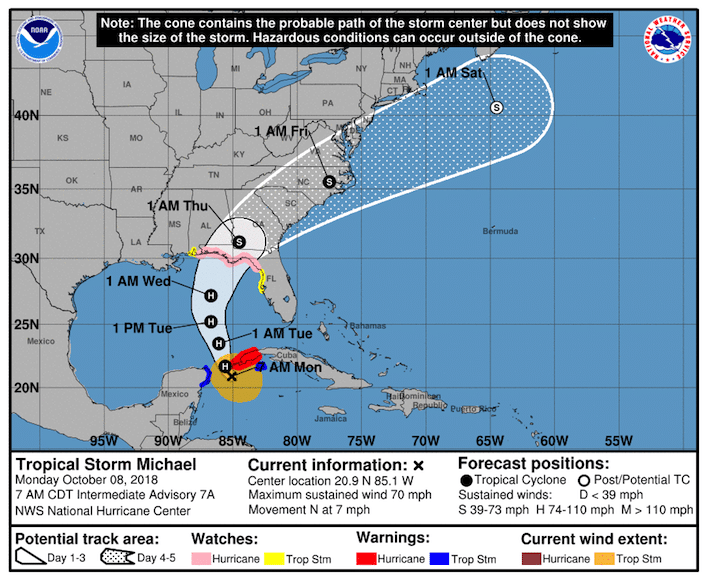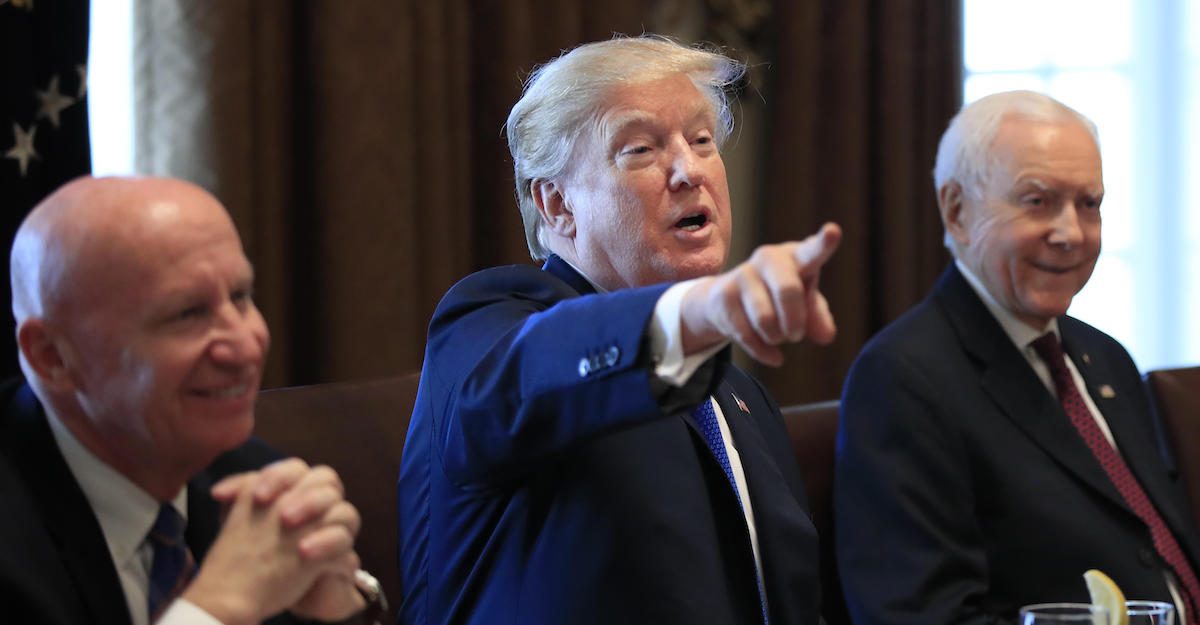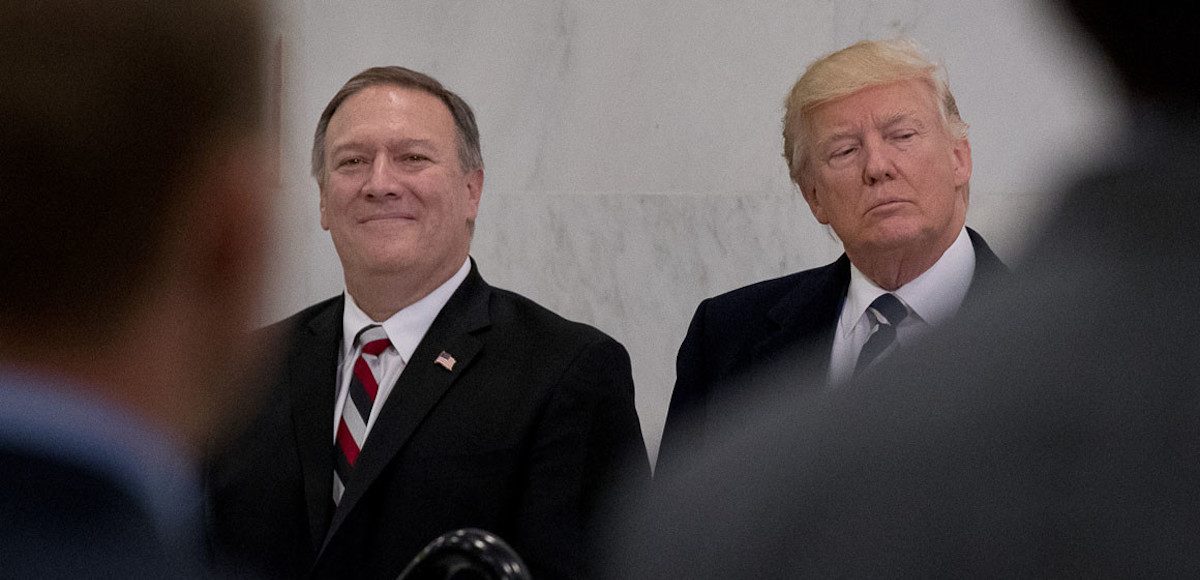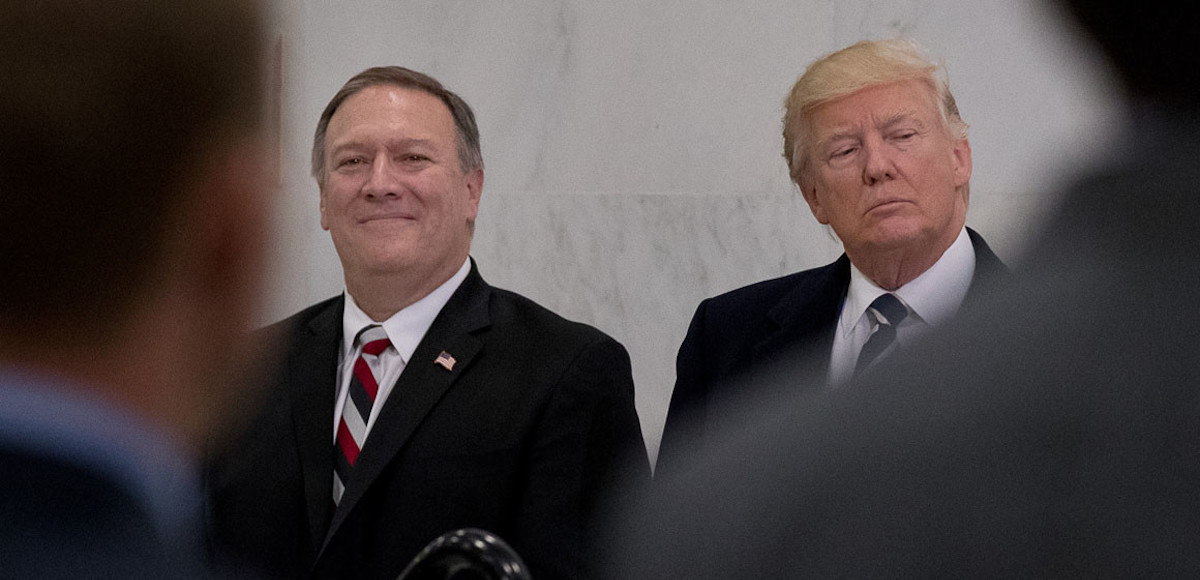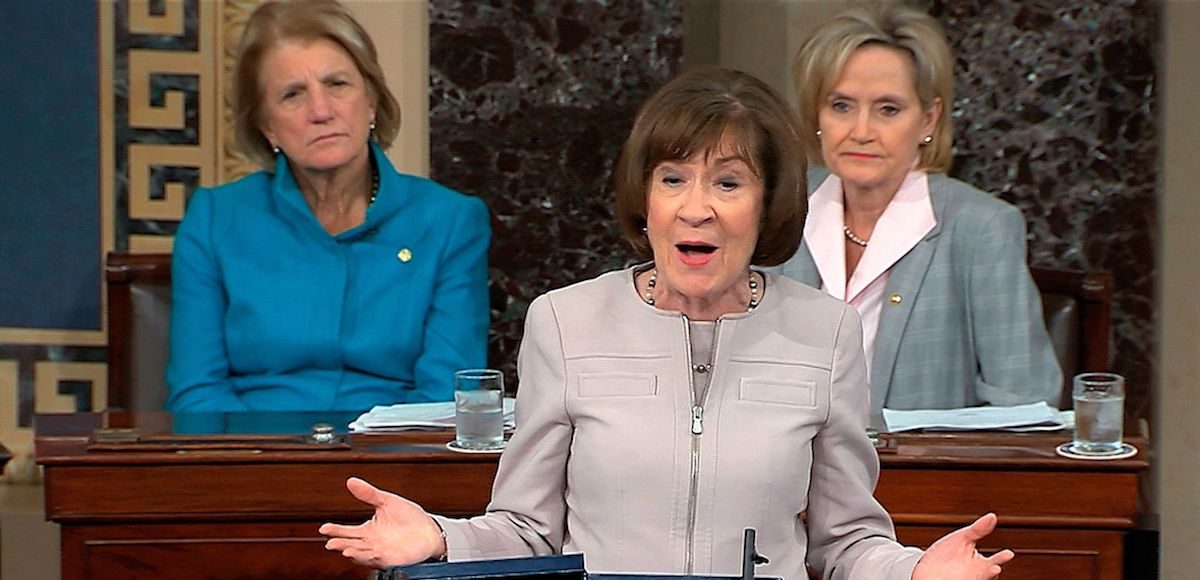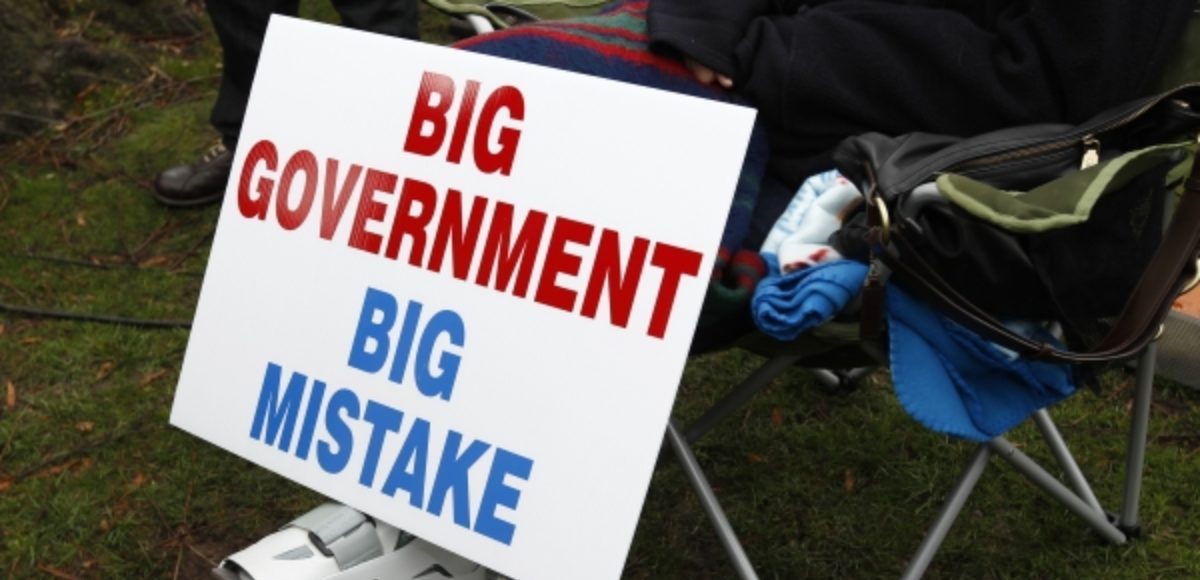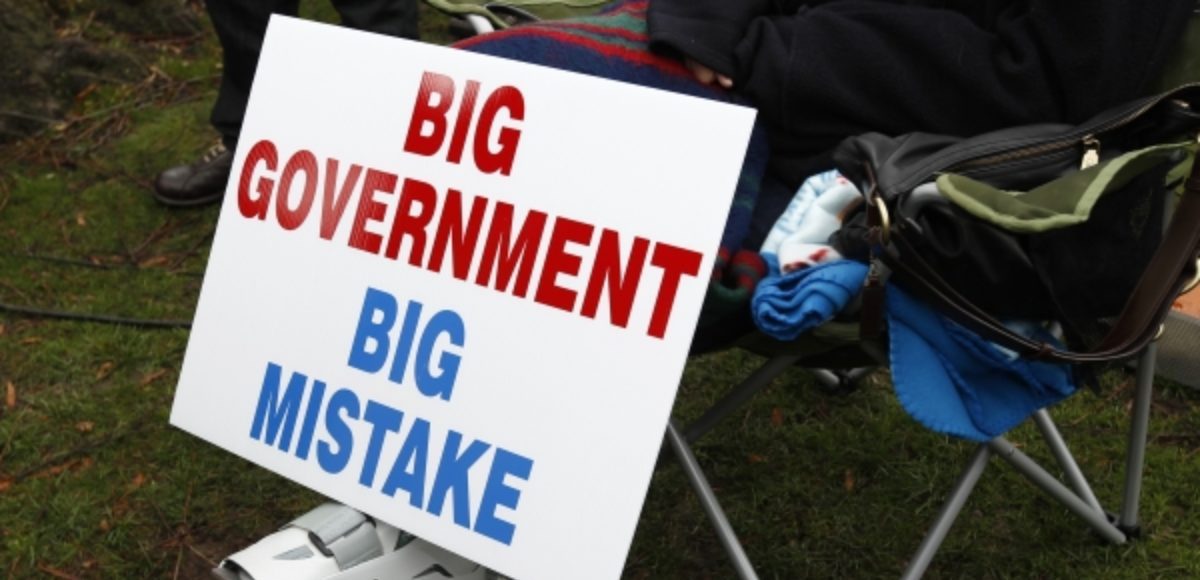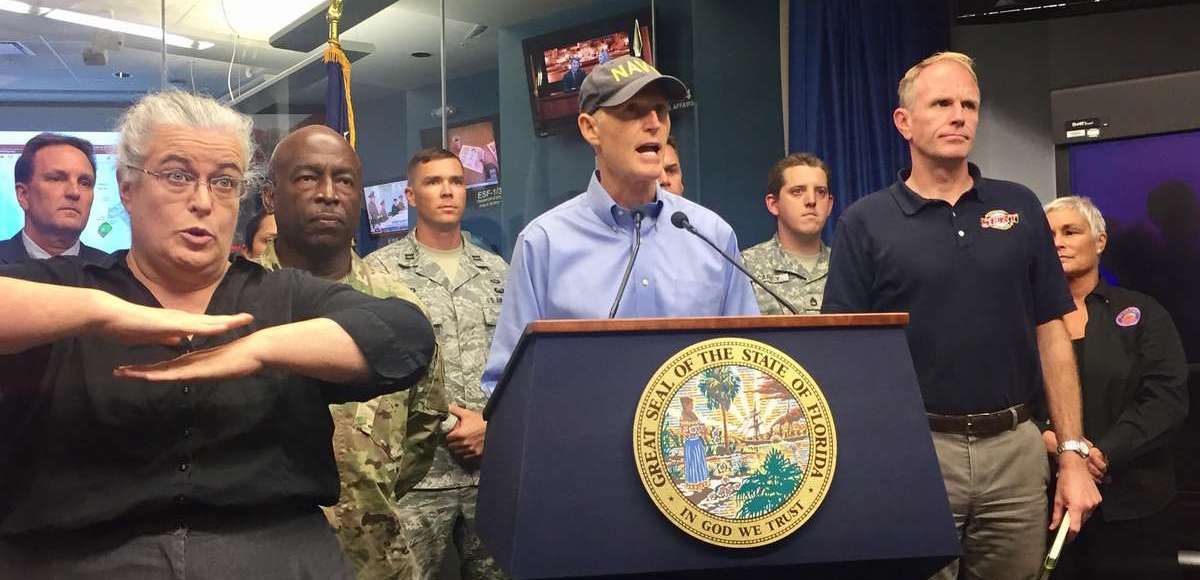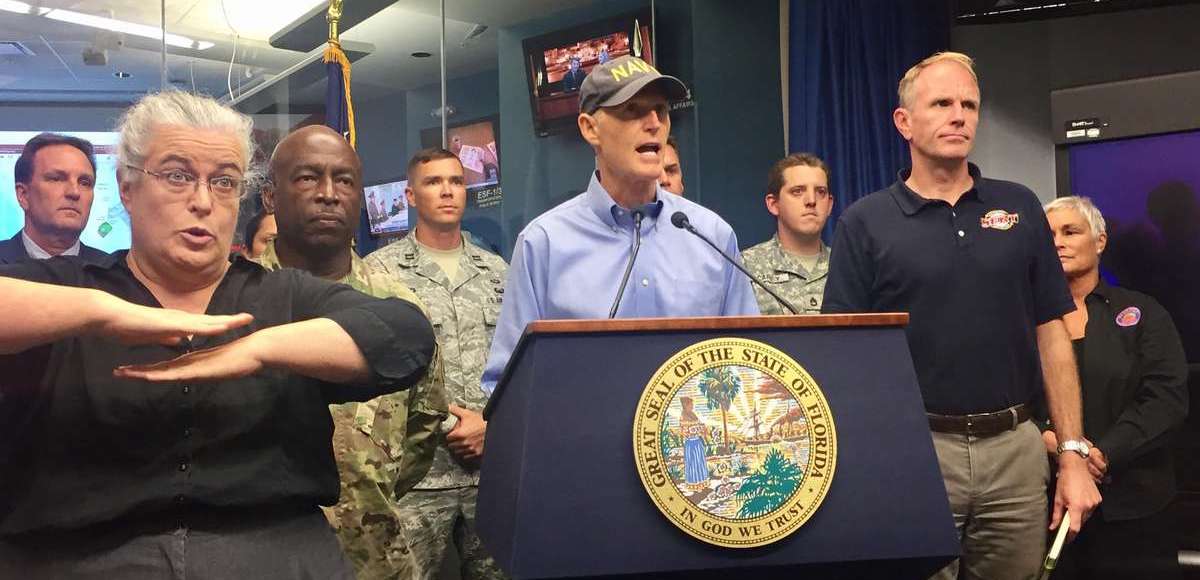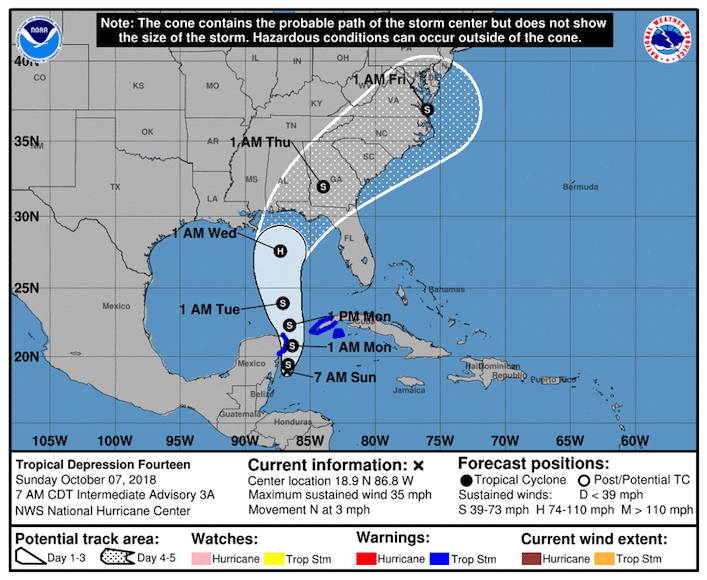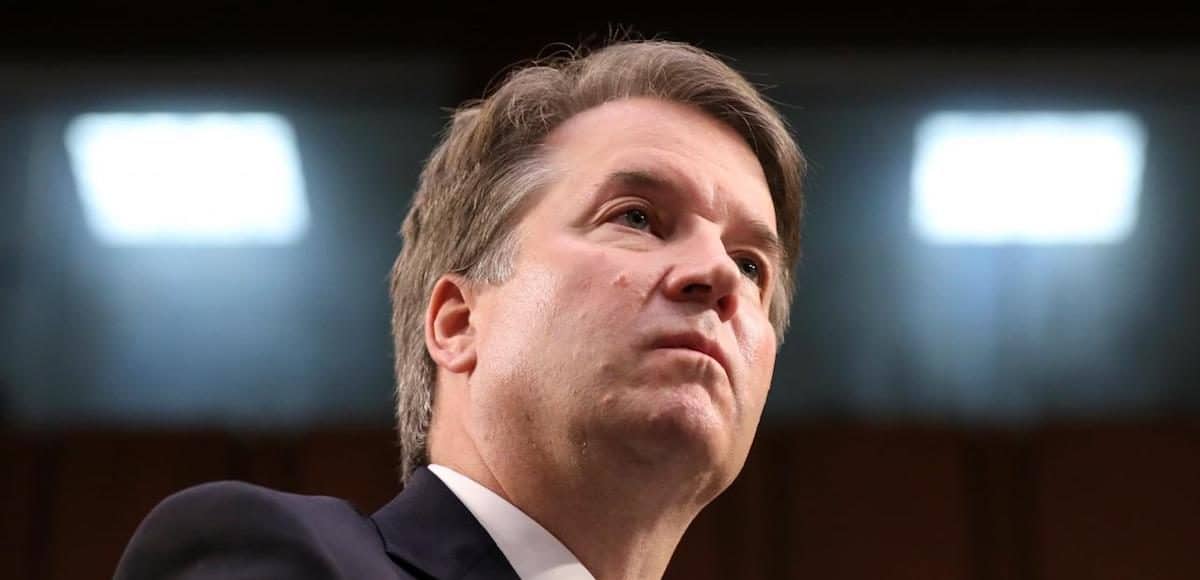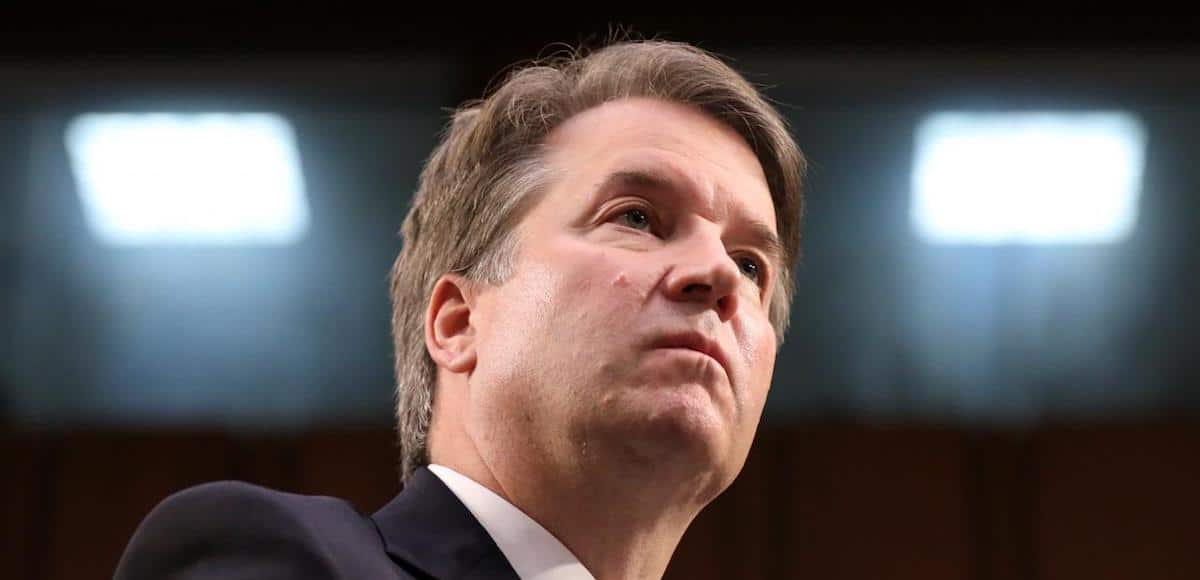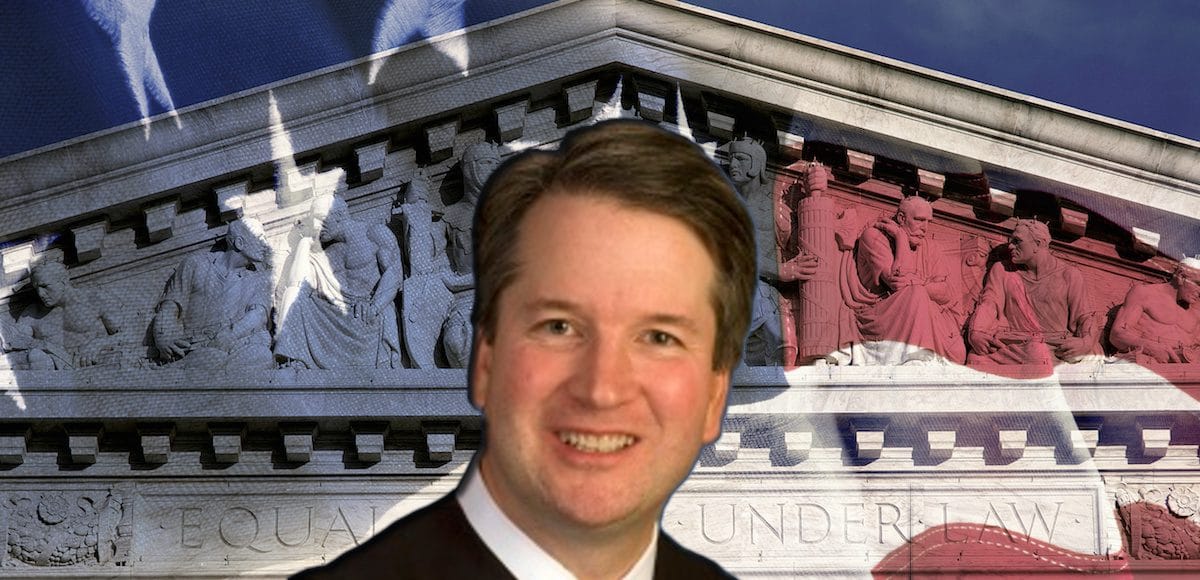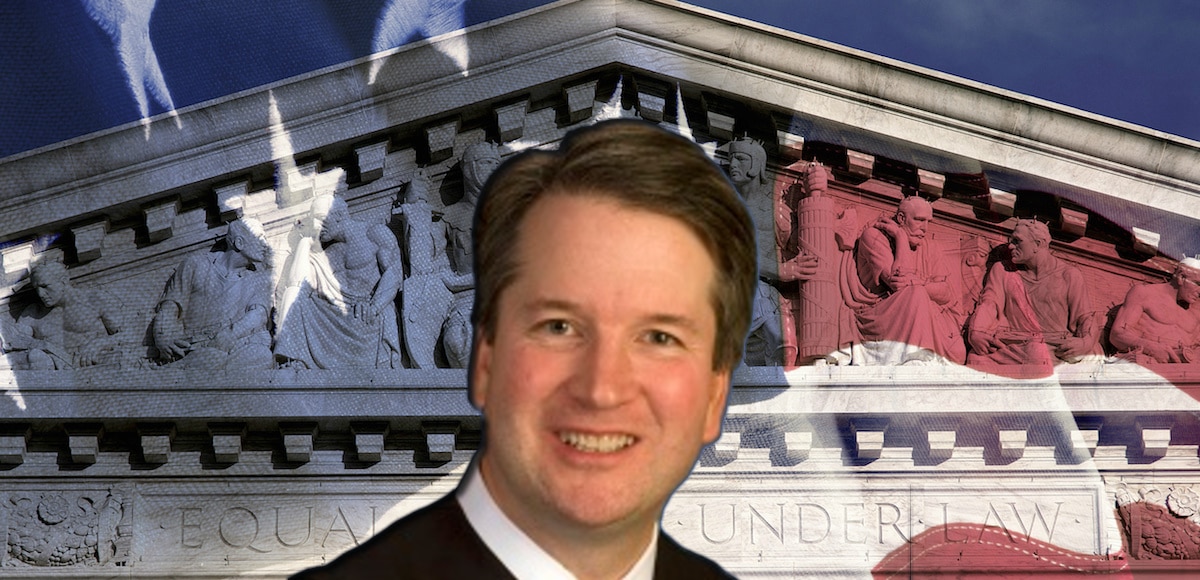Senator Susan Collins, R-Me., gave a speech on the floor of the U.S. Senate Friday announcing she would vote to confirm U.S. Supreme Court Justice Brett Kavanaugh. It was a remarkable display of intellectual elegance, delivered with artful precision.
It was beautiful to watch, a lot more beautiful than watching female celebrities getting arrested for egregious behavior disguised as “protests.” It also made me proud to be a woman, given those celebrities and others in the pop culture spotlight appear hellbent on convincing everyone we favor anthropological regression.
Senator Collins did not shrink away from the seriousness of the moment or allow emotion and passion to cloud her reason. She held Lady Justice’s hand, stood between the mob and the U.S. Constitution, and defended all of our rights codified in the founding document.
I implore readers to not simply listen to media sound bites, but the speech in its entirety, above. It is worth the time, and it is historic. The speech was well-researched and, unlike too many in the upper chamber, she took her role to advise and consent seriously. The same cannot be said of Senate Democrats.
Mr. President, the five previous times that I’ve come to the floor to explain my vote on the nomination of a justice to the United States Supreme Court, I have begun my floor remarks explaining my decision with a recognition of the solemn nature and the importance of the occasion. But today we have come to the conclusion of a confirmation process that has become so dysfunctional, it looks more like a caricature of a gutter-level political campaign than a solemn occasion.
My Translation: We have turned what was intended to be a tradition of honorable deliberation into a TV-MA-rated embarrassment.
There is a sadness in Senator Collins’ opening statement. It is evident.
The President nominated Brett Kavanaugh on July 9. Within moments of that announcement, special interest groups raced to be the first to oppose him, including one organization that didn’t even bother to fill in the judge’s name on its pre-written press release. They simply wrote that they opposed Donald Trump’s nomination of “XX” to the Supreme Court of the United States. A number of senators joined the race to announce their opposition, but they were beaten to the punch by one of our colleagues who actually announced opposition before the nominee’s identity was even known.
My Translation: This was premeditated obstruction that ended with character assassination. It will take a very long time before the collective Republican mind is comfortable making good faith efforts to reach across the aisle without being suspicious of the evil machinations of the Democratic Party.
The smear against U.S. Supreme Court Justice Kavanaugh is truly a testimony to the man’s character. In order to survive orchestrated opposition of this magnitude, one could reasonably conclude Justice Kavanaugh’s character is pristine.
This will not soon be forgotten. The American left has shown they have no boundaries on their behavior. All lines are to be crossed, at all costs and no matter the consequences. They will not think twice about who they hurt, just as long as the end justifies the means.
Since that time, we have seen special interest groups whip their followers into a frenzy by spreading misrepresentations and outright falsehoods about Judge Kavanaugh’s judicial record. Over-the-top rhetoric and distortions of his record and testimony at his first hearing produced short-lived headlines, which although debunked hours later, continued to live on and be spread through social media. Interest groups have also spent an unprecedented amount of dark money opposing this nomination. Our Supreme Court confirmation process has been in steady decline for more than 30 years.
One can only hope that the Kavanaugh nomination is where the process has finally hit rock bottom. Against this backdrop, it is up to each individual senator to decide what the Constitution’s advice and consent duty means. Informed by Alexander Hamilton’s Federalist 76, I have interpreted this to mean that the president has broad discretion to consider a nominee’s philosophy, whereas my duty as a senator is to focus on the nominee’s qualifications as long as that nominee’s philosophy is within the mainstream of judicial thought.
My Translation: Senator Collins evidently believes Democrats have hit rock bottom. However, I know that they can go even lower than this. This is not rock bottom for the American left. Since the left lost this battle, they will now up the ante. The Democratic Party has turned the process for a judicial promotion into a punishment.
Mr. President, I understand both viewpoints. This debate is complicated further by the fact that the Senate confirmation process is not a trial. But certain fundamental legal principles—about due process, the presumption of innocence, and fairness—do bear on my thinking, and I cannot abandon them.
Never before have we threatened the most basic principle of justice and fairness, the presumption of innocence. At the risk of being dramatic, this alone should scare the living daylights out of the American people.
Citizens being presumed guilty rather than innocent will plunge professional society into a state of chaos, a never-ending assault of sexual assault allegations against those with whom we disagree.
The “intergalactic circus” we all just witnessed was a disgrace to the U.S. Senate, and its time-honored traditions. By assuming every uncorroborated allegation against Justice Kavanaugh was true — no matter how flimsy, no matter how heinous the allegation — the left has scared soft Republicans back home.
The impact to electoral politics says nothing of the impact to the U.S. Senate, itself. Senator Collins was clearly disturbed by the lack of reverence to the institution, particularly the leak of the letter from Professor Christine Blasey Ford, and allegedly against her wishes. She lets the leaker of the letter have it.
To that leaker who I hope is listening now, let me say that what you did was unconscionable. You have taken a survivor who was not only entitled to your respect but who also trusted you to protect her, and you have sacrificed her well-being in a misguided attempt to win whatever political crusade you think you are fighting.
My only hope is that your callous act has turned this process into such a dysfunctional circus that it will cause the Senate and indeed all Americans to reconsider how we evaluate Supreme Court if that happens, then the appalling lack of compassion you afforded Prof. Ford will at least have some unintended positive consequences.
My Translation: Dear Leaker, you were just spanked like a child by an adult on national television.
In all of this madness, we must hold up those who took the hard stands when our core was threatened. With that, bravo and job well done to Senator Susan Collins, who showed the world Friday women also value reason and principle.
Full Transcript of Susan Collins’ Floor Speech
Mr. President, the five previous times that I have come to the floor to explain my vote on the nomination of a justice to the United States Supreme Court, I have begun my floor remarks explaining my decision with a recognition of the solemn nature and the importance of the occasion.
But today we have come to the conclusion of a confirmation process that has become so dysfunctional it looks more like a caricature of a gutter-level political campaign than a solemn occasion.
The President nominated Brett Kavanaugh on July 9th. Within moments of that announcement, special interest groups raced to be the first to oppose him, including one organization that didn’t even bother to fill in the Judge’s name on its pre-written press release – they simply wrote that they opposed “Donald Trump’s nomination of XX to the Supreme Court of the United States.” A number of Senators joined the race to announce their opposition, but they were beaten to the punch by one of our colleagues who actually announced opposition before the nominee’s identity was even known.
Since that time, we have seen special interest groups whip their followers into a frenzy by spreading misrepresentations and outright falsehoods about Judge Kavanaugh’s judicial record. Over-the-top rhetoric and distortions of his record and testimony at his first hearing produced short-lived headlines which, although debunked hours later, continue to live on and be spread through social media. Interest groups have also spent an unprecedented amount of dark money opposing this nomination.
Our Supreme Court confirmation process has been in steady decline for more than thirty years. One can only hope that the Kavanaugh nomination is where the process has finally hit rock bottom.
Against this backdrop, it is up to each individual Senator to decide what the Constitution’s “advice and consent” duty means. Informed by Alexander Hamilton’s Federalist 76, I have interpreted this to mean that the President has broad discretion to consider a nominee’s philosophy, whereas my duty as a Senator is to focus on the nominee’s qualifications as long as that nominee’s philosophy is within the mainstream of judicial thought.
I have always opposed litmus tests for judicial nominees with respect to their personal views or politics, but I fully expect them to be able to put aside any and all personal preferences in deciding the cases that come before them. I have never considered the President’s identity or party when evaluating Supreme Court nominations. As a result, I voted in favor of Justices Roberts and Alito, who were nominated by President Bush, Justices Sotomayor and Kagan, who were nominated by President Obama, and Justice Gorsuch, who was nominated by President Trump.
So I began my evaluation of Judge Kavanaugh’s nomination by reviewing his 12-year record on the DC Circuit Court of Appeals, including his more than 300 opinions and his many speeches and law review articles. Nineteen attorneys, including lawyers from the non-partisan Congressional Research Service, briefed me many times each week and assisted me in evaluating the judge’s extensive record. I met with Judge Kavanaugh for more than two hours in my office. I listened carefully to the testimony at the Committee hearings. I spoke with people who knew him personally, such as Condoleezza Rice and many others. And, I talked with Judge Kavanaugh a second time by phone for another hour to ask him very specific additional questions.
I have also met with thousands of my constituents, both advocates and many opponents, regarding Judge Kavanaugh. One concern that I frequently heard was that Judge Kavanaugh would be likely to eliminate the Affordable Care Act’s (ACA) vital protections for people with preexisting conditions. I disagree with this contention. In a dissent in Seven-Sky v. Holder, Judge Kavanaugh rejected a challenge to the ACA on narrow procedural grounds, preserving the law in full. Many experts have said his dissent informed Justice Roberts’ opinion upholding the ACA at the Supreme Court.
Furthermore, Judge Kavanaugh’s approach toward the doctrine of severability is narrow. When a part of a statute is challenged on constitutional grounds, he has argued for severing the invalid clause as surgically as possible while allowing the overall law to remain intact.
This was his approach in his dissent in a case that involved a challenge to the structure of the Consumer Financial Protection Bureau (PPH v. CFPB). In his dissent, Judge Kavanaugh argued for “severing any problematic portions while leaving the remainder intact.” Given the current challenges to the ACA, proponents, including myself, of protections for people with pre-existing conditions should want a Justice who would take just this kind of approach.
Another assertion I have heard often is that Judge Kavanaugh cannot be trusted if a case involving alleged wrongdoing by the President were to come before the Court. The basis for this argument seems to be two-fold. First, Judge Kavanaugh has written that he believes that Congress should enact legislation to protect presidents from criminal prosecution or civil liability while in office. Mr. President, I believe opponents miss the mark on this issue. The fact that Judge Kavanaugh offered this legislative proposal suggests that he believes that the President does not have such protection currently.
Second, there are some who argue that given the current Special Counsel investigation, President Trump should not even be allowed to nominate a justice. That argument ignores our recent history. President Clinton, in 1993, nominated Justice Ginsburg after the Whitewater investigation was already underway. And she was confirmed 96-3. The next year, just three months after Independent Counsel Robert Fiske was named to lead the Whitewater investigation, President Clinton nominated Justice Breyer. He was confirmed 87-9.
Supreme Court Justices have not hesitated to rule against the presidents who have nominated them. Perhaps most notably in United States v. Nixon, three Nixon appointees who heard the case joined the unanimous opinion against him.
Judge Kavanaugh has been unequivocal in his belief that no president is above the law. He has stated that Marbury v. Madison, Youngstown Steel v. Sawyer and United States v. Nixon are three of the four greatest Supreme Court cases in history. What do they have in common? Each of them is a case where the Court served as a check on presidential power. And I would note that the fourth case that Judge Kavanaugh has pointed to as the greatest in history was Brown v Board of Education.
One Kavanaugh decision illustrates the point about the check on presidential power directly. He wrote the opinion in Hamdan v. United States, a case that challenged the Bush Administration’s military commission prosecution of an associate of Osama Bin Laden. This conviction was very important to the Bush Administration, but Judge Kavanaugh, who had been appointed to the DC Circuit by President Bush and had worked in President Bush’s White House, ruled that the conviction was unlawful. As he explained during the hearing, “We don’t make decisions based on who people are, or their policy preferences, or the moment. We base decisions on the law….”
Others I met with have expressed concerns that Justice Kennedy’s retirement threatens the right of same sex couples to marry. Yet, Judge Kavanaugh described the Obergefell decision, which legalized same gender marriages, as an important landmark precedent. He also cited Justice Kennedy’s recent Masterpiece Cakeshop opinion for the Court’s majority stating that: “The days of treating gay and lesbian Americans or gay and lesbian couples as second-class citizens who are inferior in dignity and worth are over in the Supreme Court.”
Others have suggested that the judge holds extreme views on birth control. In one case, Judge Kavanaugh incurred the disfavor of both sides of the political spectrum for seeking to ensure the availability of contraceptive services for women while minimizing the involvement of employers with religious objections. Although his critics frequently overlook this point, Judge Kavanaugh’s dissent rejected arguments that the government did not have a compelling interest in facilitating access to contraception. In fact, he wrote that the Supreme Court precedent “strongly suggested” that there was a “compelling interest” in facilitating access to birth control.
There has also been considerable focus on the future of abortion rights based on the concern that Judge Kavanaugh would seek to overturn Roe v. Wade. Protecting this right is important to me.
To my knowledge, Judge Kavanaugh is the first Supreme Court nominee to express the view that precedent is not merely a practice and tradition, but rooted in Article III of our Constitution itself. He believes that precedent “is not just a judicial policy … it is constitutionally dictated to pay attention and pay heed to rules of precedent.” In other words, precedent isn’t a goal or an aspiration; it is a constitutional tenet that has to be followed except in the most extraordinary circumstances.
The judge further explained that precedent provides stability, predictability, reliance, and fairness. There are, of course, rare and extraordinary times where the Supreme Court would rightly overturn a precedent. The most famous example was when the Supreme Court in Brown v. Board of Education overruled Plessy v. Ferguson, correcting a “grievously wrong” decision–to use the judge’s term–allowing racial inequality. But, someone who believes that the importance of precedent has been rooted in the Constitution would follow long-established precedent except in those rare circumstances where a decision is “grievously wrong” or “deeply inconsistent with the law.” Those are Judge Kavanaugh’s phrases.
As Judge Kavanaugh asserted to me, a long-established precedent is not something to be trimmed, narrowed, discarded, or overlooked. Its roots in the Constitution give the concept of stare decisis greater weight such that precedent can’t be trimmed or narrowed simply because a judge might want to on a whim. In short, his views on honoring precedent would preclude attempts to do by stealth that which one has committed not to do overtly.
Noting that Roe v. Wade was decided 45 years ago, and reaffirmed 19 years later in Planned Parenthood v. Casey, I asked Judge Kavanaugh whether the passage of time is relevant to following precedent. He said decisions become part of our legal framework with the passage of time and that honoring precedent is essential to maintaining public confidence.
Our discussion then turned to the right of privacy, on which the Supreme Court relied in Griswold v. Connecticut, a case that struck down a law banning the use and sale of contraceptives. Griswold established the legal foundation that led to Roe eight years later. In describing Griswold as “settled law,” Judge Kavanaugh observed that it was the correct application of two famous cases from the 1920s, Meyer and Pierce, that are not seriously challenged by anyone today. Finally, in his testimony, he noted repeatedly that Roe had been upheld by Planned Parenthood v. Casey, describing it as “precedent on precedent.” When I asked him would it be sufficient to overturn a long-established precedent if five current justices believed it was wrongly decided, he emphatically said “no.”
Opponents frequently cite then-candidate Donald Trump’s campaign pledge to nominate only judges who would overturn Roe. The Republican platform for all presidential campaigns has included this pledge since at least 1980. During this time, Republican presidents have appointed Justices O’Connor, Souter, and Kennedy to the Supreme Court. These are the very three justices—Republican president appointed justices—who authored the Casey decision, which reaffirmed Roe. Furthermore, pro-choice groups vigorously opposed each of these justices’ nominations. Incredibly, they even circulated buttons with the slogan “Stop Souter Or Women Will Die!” Just two years later, Justice Souter coauthored the Casey opinion, reaffirming a woman’s right to choose. Suffice it to say, prominent advocacy organizations have been wrong.
These same interest groups have speculated that Judge Kavanaugh was selected to do the bidding of conservative ideologues, despite his record of judicial independence. I asked the judge point blank whether he had made any commitments or pledges to anyone at the White House, to the Federalist Society, or to any outside group on how he would decide cases. He unequivocally assured me he had not.
Judge Kavanaugh has received rave reviews for his 12-year track record as a judge, including for his judicial temperament. The American Bar Association (ABA) gave him its highest possible rating. Its Standing Committee on the Federal Judiciary conducted an extraordinarily thorough assessment, soliciting input from almost 500 people, including his judicial colleagues. The ABA concluded that “his integrity, judicial temperament, and professional competence met the highest standard.”
Lisa Blatt, who has argued more cases before the Supreme Court than any other woman in history, testified: “By any objective measure, Judge Kavanaugh is clearly qualified to serve on the Supreme Court.” “His opinions are invariably thoughtful and fair….” Ms. Blatt, who clerked for and is an ardent admirer of Justice Ginsburg, and who is, in her own words, “an unapologetic defender of a woman’s right to choose,” said that Judge Kavanaugh “fit[s] in the mainstream of legal thought.” She also observed that “Judge Kavanaugh is remarkably committed to promoting women in the legal profession.”
That Judge Kavanaugh is more of a centrist than some of his critics maintain is reflected in the fact that he and Chief Judge Merrick Garland voted the same way in 93 percent of the cases that they heard together. Indeed, Chief Judge Garland joined in more than 96 percent of the majority opinions authored by Judge Kavanaugh, dissenting only once.
Despite all this, after weeks of reviewing Judge Kavanaugh’s record and listening to 32 hours of his testimony, the Senate’s advice and consent role was thrown into a tailspin following the allegations of sexual assault by Professor Christine Blasey Ford. The confirmation process now involves evaluating whether or not Judge Kavanaugh committed sexual assault, and lied about it to the Judiciary Committee.
Some argue that because this is a lifetime appointment to our highest court, the public interest requires that doubts be resolved against the nominee. Others see the public interest as embodied in our long-established tradition of affording to those accused of misconduct a presumption of innocence. In cases in which the facts are unclear, they would argue that the question should be resolved in favor of the nominee.
Mr. President, I understand both viewpoints. This debate is complicated further by the fact that the Senate confirmation process is not a trial. But certain fundamental legal principles—about due process, the presumption of innocence, and fairness—do bear on my thinking, and I cannot abandon them.
In evaluating any given claim of misconduct, we will be ill served in the long run if we abandon the presumption of innocence and fairness, tempting though it may be. We must always remember that it is when passions are most inflamed that fairness is most in jeopardy.
The presumption of innocence is relevant to the advice and consent function when an accusation departs from a nominee’s otherwise exemplary record. I worry that departing from this presumption could lead to a lack of public faith in the judiciary and would be hugely damaging to the confirmation process moving forward.
Some of the allegations levied against Judge Kavanaugh illustrate why the presumption of innocence is so important. I am thinking in particular not of the allegations raised by Professor Ford, but of the allegation that, when he was a teenager, Judge Kavanaugh drugged multiple girls and used their weakened state to facilitate gang rape. This outlandish allegation was put forth without any credible supporting evidence and simply parroted public statements of others. That such an allegation can find its way into the Supreme Court confirmation process is a stark reminder about why the presumption of innocence is so ingrained in our American consciousness.
Mr. President, I listened carefully to Christine Blasey Ford’s testimony before the Judiciary Committee. I found her testimony to be sincere, painful, and compelling. I believe that she is a survivor of a sexual assault and that this trauma has upended her life. Nevertheless, the four witnesses she named could not corroborate any of the events of that evening gathering where she says the assault occurred; none of the individuals Professor Ford says were at the party has any recollection at all of that night.
Judge Kavanaugh forcefully denied the allegations under penalty of perjury. Mark Judge denied under penalty of felony that he had witnessed an assault. PJ Smyth, another person allegedly at the party, denied that he was there under penalty of felony. Professor Ford’s life-long friend Leland Keyser indicated that, under penalty of felony, she does not remember that party. And Ms. Keyser went further. She indicated that not only does she not remember a night like that, but also that she does not even know Brett Kavanaugh.
In addition to the lack of corroborating evidence, we also learned some facts that raised more questions. For instance, since these allegations have become public, Professor Ford testified that not a single person has contacted her to say, “I was at the party that night.”
Furthermore, the professor testified that although she does not remember how she got home that evening, she knew that, because of the distance, she would have needed a ride – yet not a single person has come forward to say that they were the one that drove her home or were in the car with her that night. And Professor Ford also indicated that even though she left that small gathering of six or so people abruptly and without saying goodbye and distraught, none of them called her the next day – or ever – to ask why she left – is she okay – not even her closest friend, Ms. Keyser.
Mr. President, the Constitution does not provide guidance as to how we are supposed to evaluate these competing claims. It leaves that decision up to each Senator. This is not a criminal trial, and I do not believe that claims such as these need to be proved beyond a reasonable doubt. Nevertheless, fairness would dictate that the claims at least should meet a threshold of “more likely than not” as our standard.
The facts presented do not mean that Professor Ford was not sexually assaulted that night – or at some other time – but they do lead me to conclude that the allegations fail to meet the “more likely than not” standard. Therefore, I do not believe that these charges can fairly prevent Judge Kavanaugh from serving on the Court.
Let me emphasize that my approach to this question should not be misconstrued as suggesting that unwanted sexual contact of any nature is not a serious problem in this country. To the contrary, if any good at all has come from this ugly confirmation process, it has been to create an awareness that we have underestimated the pervasiveness of this terrible problem.
I have been alarmed and disturbed, however, by some who have suggested that unless Judge Kavanaugh’s nomination is rejected, the Senate is somehow condoning sexual assault. Nothing could be further from the truth.
Every person—man or woman–who makes a charge of sexual assault deserves to be heard and treated with respect. The #MeToo movement is real. It matters. It is needed. And it is long overdue. We know that rape and sexual assault are less likely to be reported to the police than other forms of assault. On average, an estimated 211,000 rapes and sexual assaults go unreported every year. We must listen to survivors, and every day we must seek to stop the criminal behavior that has hurt so many. We owe this to ourselves, our children, and generations to come.
Since the hearing, I have listened to many survivors of sexual assault. Many were total strangers who told me their heart-wrenching stories for the first time in their lives. Some were friends I have known for decades, yet with the exception of one woman who had confided in me years ago, I had no idea that they had been the victims of sexual attacks. I am grateful for their courage and their willingness to come forward, and I hope that in heightening public awareness, they have also lightened the burden that they have been quietly bearing for so many years. To them, I pledge to do all that I can to ensure that their daughters and granddaughters never share their experiences.
Over the past few weeks, I have been emphatic that the Senate has an obligation to investigate and evaluate the serious allegations of sexual assault. I called for and supported the additional hearing to hear from both Professor Ford and Judge Kavanaugh. I also pushed for and supported the FBI supplemental background investigation. This was the right thing to do.
Christine Ford never sought the spotlight. She indicated that she was terrified to appear before the Senate Judiciary Committee, and she has shunned attention since then. She seemed completely unaware of Chairman Grassley’s offer to allow her to testify confidentially in California. Watching her, Mr. President, I could not help but feel that some people who wanted to engineer the defeat of this nomination cared little, if at all, for her well-being.
Professor Ford testified that a very limited number of people had access to her letter. Yet that letter found its way into the public domain. She testified that she never gave permission for that very private letter to be released. And yet, here we are. We are in the middle of a fight that she never sought, arguing about claims that she wanted to raise confidentially.
One theory I have heard espoused repeatedly is that our colleague, Senator Feinstein, leaked Professor Ford’s letter at the eleventh hour to derail this process. I want to state this very clearly: I know Senator Diane Feinstein extremely well, and I believe that she would never do that. I knew that to be the case before she even stated it at the hearing. She is a person of integrity, and I stand by her.
I have also heard some argue that the Chairman of the Committee somehow treated Professor Ford unfairly. Nothing could be further from the truth. Chairman Grassley, along with his excellent staff, treated Professor Ford with compassion and respect throughout the entire process. And that is the way the Senator from Iowa has conducted himself throughout a lifetime dedicated to public service.
But the fact remains, Mr. President, that someone leaked this letter against Professor Ford’s express wishes. I suspect, regrettably, that we will never know for certain who did it. To that leaker, who I hope is listening now, let me say that what you did was unconscionable. You have taken a survivor who was not only entitled to your respect, but who also trusted you to protect her – and you have sacrificed her well-being in a misguided attempt to win whatever political crusade you think you are fighting. My only hope is that your callous act has turned this process into such a dysfunctional circus that it will cause the Senate – and indeed all Americans – to reconsider how we evaluate Supreme Court nominees. If that happens, then the appalling lack of compassion you afforded Professor Ford will at least have some unintended positive consequences.
Mr. President, the politically charged atmosphere surrounding this nomination had reached a fever pitch even before these allegations were known, and it has been challenging even then to separate fact from fiction.
We live in a time of such great disunity, as the bitter fight over this nomination both in the Senate and among the public clearly demonstrates. It is not merely a case of different groups having different opinions. It is a case of people bearing extreme ill will toward those who disagree with them. In our intense focus on our differences, we have forgotten the common values that bind us together as Americans. When some of our best minds are seeking to develop ever more sophisticated algorithms designed to link us to websites that only reinforce and cater to our views, we can only expect our differences to intensify.
This would have alarmed the drafters of our Constitution, who were acutely aware that different values and interests could prevent Americans from becoming and remaining a single people. Indeed, of the six objectives they invoked in the preamble to the Constitution, the one that they put first was the formation of “a more perfect Union.”
Their vision of “a more perfect Union” does not exist today, and if anything, we appear to be moving farther away from it. It is particularly worrisome that the Supreme Court, the institution that most Americans see as the principal guardian of our shared constitutional heritage, is viewed as part of the problem through a political lens.
Mr. President, we’ve heard a lot of charges and counter charges about Judge Kavanaugh. But as those who have known him best have attested, he has been an exemplary public servant, judge, teacher, coach, husband, and father. Despite the turbulent, bitter fight surrounding his nomination, my fervent hope is that Brett Kavanaugh will work to lessen the divisions in the Supreme Court so that we have far fewer 5-4 decisions and so that public confidence in our Judiciary and our highest court is restored. Mr. President, I will vote to confirm Judge Kavanaugh.
